Data breaches pose significant risks to organizations, making prevention, response, and responsibility critical components of cybersecurity strategy. By implementing robust security measures and training employees, businesses can minimize their vulnerability to attacks. In the event of a breach, having a clear response plan is essential to mitigate damage and restore trust, while organizations must also uphold their responsibilities to comply with regulations and communicate transparently with affected individuals.
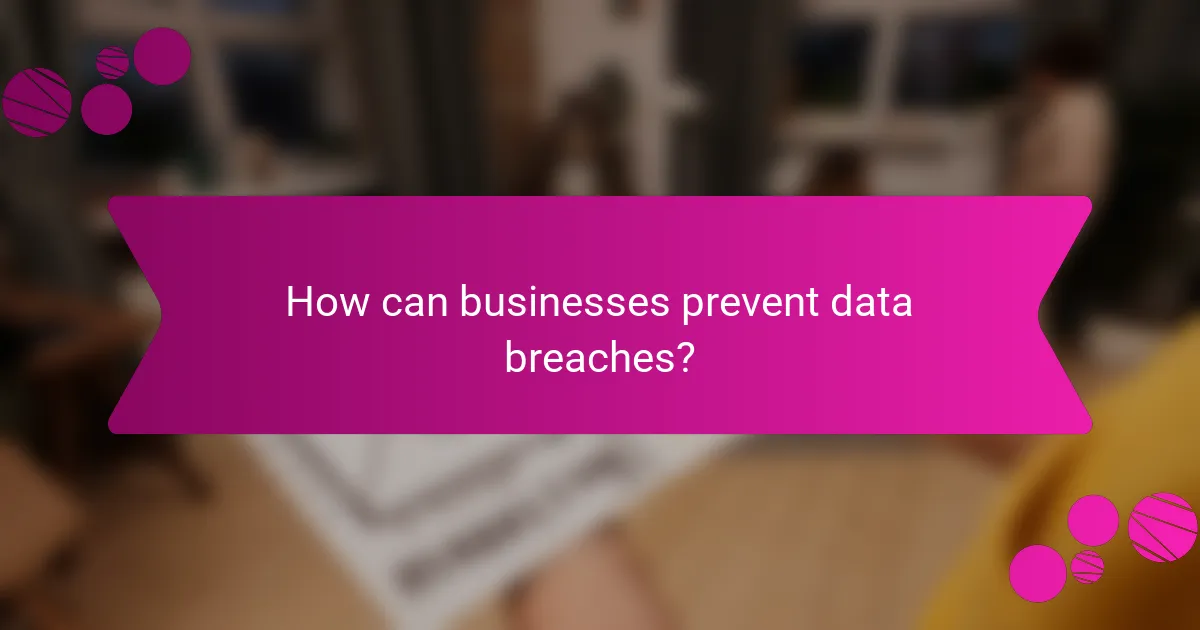
How can businesses prevent data breaches?
Businesses can prevent data breaches by implementing a combination of strong security measures, employee training, and regular assessments of their systems. By focusing on access controls, encryption, and authentication methods, organizations can significantly reduce their vulnerability to cyber threats.
Implementing strong access controls
Strong access controls ensure that only authorized personnel can access sensitive data. This can be achieved through role-based access control (RBAC), where permissions are assigned based on job responsibilities, limiting exposure to critical information.
Regularly reviewing and updating access permissions is crucial. For instance, when an employee changes roles or leaves the company, their access should be promptly revoked to prevent unauthorized data access.
Regular security training for employees
Regular security training equips employees with the knowledge to recognize and respond to potential threats. Training should cover topics such as phishing, password management, and safe internet practices.
Consider conducting training sessions at least bi-annually and supplementing them with ongoing awareness campaigns. This helps reinforce good security habits and keeps security top-of-mind for all staff members.
Utilizing encryption technologies
Encryption technologies protect sensitive data by converting it into a format that is unreadable without the proper decryption key. This is particularly important for data in transit, such as emails and online transactions.
Implementing encryption standards like AES (Advanced Encryption Standard) can provide robust protection. Businesses should also ensure that data at rest, such as files stored on servers, is encrypted to safeguard against unauthorized access.
Conducting regular security audits
Regular security audits help identify vulnerabilities within an organization’s systems. These audits should assess both technical controls and organizational policies to ensure compliance with best practices and regulations.
Consider scheduling audits at least annually or after significant system changes. Engaging third-party security experts can provide an unbiased perspective and uncover issues that internal teams may overlook.
Adopting multi-factor authentication
Multi-factor authentication (MFA) adds an extra layer of security by requiring users to provide two or more verification factors to gain access. This could include something they know (a password), something they have (a smartphone), or something they are (biometric data).
Implementing MFA can significantly reduce the risk of unauthorized access, especially for sensitive accounts. Encourage its use across all platforms, particularly for remote access and administrative accounts, to enhance overall security posture.
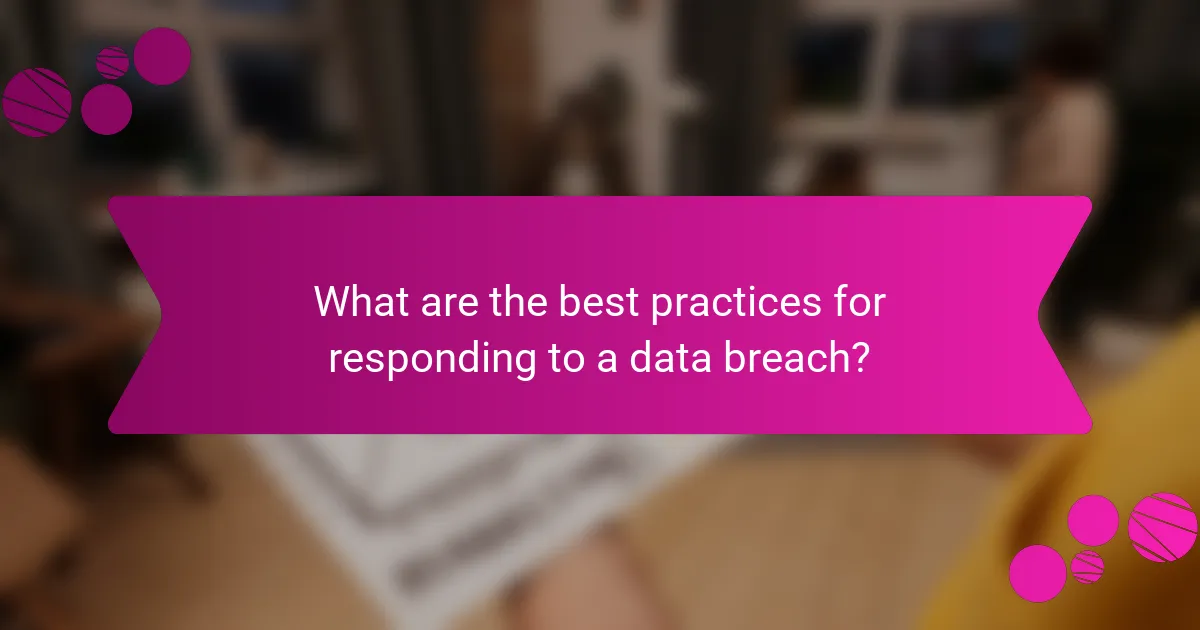
What are the best practices for responding to a data breach?
To effectively respond to a data breach, organizations should have a clear plan in place that outlines immediate actions, communication strategies, and recovery steps. Quick and decisive action can mitigate damage and help restore trust with affected parties.
Establishing an incident response plan
An incident response plan is crucial for managing data breaches efficiently. This plan should outline roles and responsibilities, communication protocols, and steps for containment and recovery. Regularly updating and testing the plan ensures that all team members are prepared when a breach occurs.
Key components of the plan include identifying critical assets, assessing potential threats, and defining procedures for detection and analysis. Organizations should also establish a timeline for response activities to maintain accountability and track progress.
Notifying affected individuals promptly
Prompt notification of affected individuals is essential to maintain transparency and trust. Depending on local regulations, organizations may be required to inform individuals within a specific timeframe, often within days of discovering the breach.
When notifying individuals, provide clear information about what data was compromised, the potential risks, and steps they can take to protect themselves. Offering support, such as credit monitoring services, can also help mitigate the impact on affected parties.
Engaging cybersecurity experts
Engaging cybersecurity experts can significantly enhance an organization’s response to a data breach. These professionals can help identify the breach’s source, assess the extent of the damage, and implement measures to prevent future incidents.
Consider partnering with a cybersecurity firm that specializes in incident response. Their expertise can provide valuable insights and resources, ensuring a more effective recovery process and compliance with relevant regulations.
Documenting the breach thoroughly
Thorough documentation of the breach is critical for legal compliance and future prevention. Keep detailed records of the incident, including how it was discovered, the response actions taken, and communications with affected individuals.
This documentation can serve as a valuable resource for post-incident analysis and can help improve future incident response plans. Additionally, it may be required for regulatory reporting, depending on the jurisdiction and the nature of the breach.
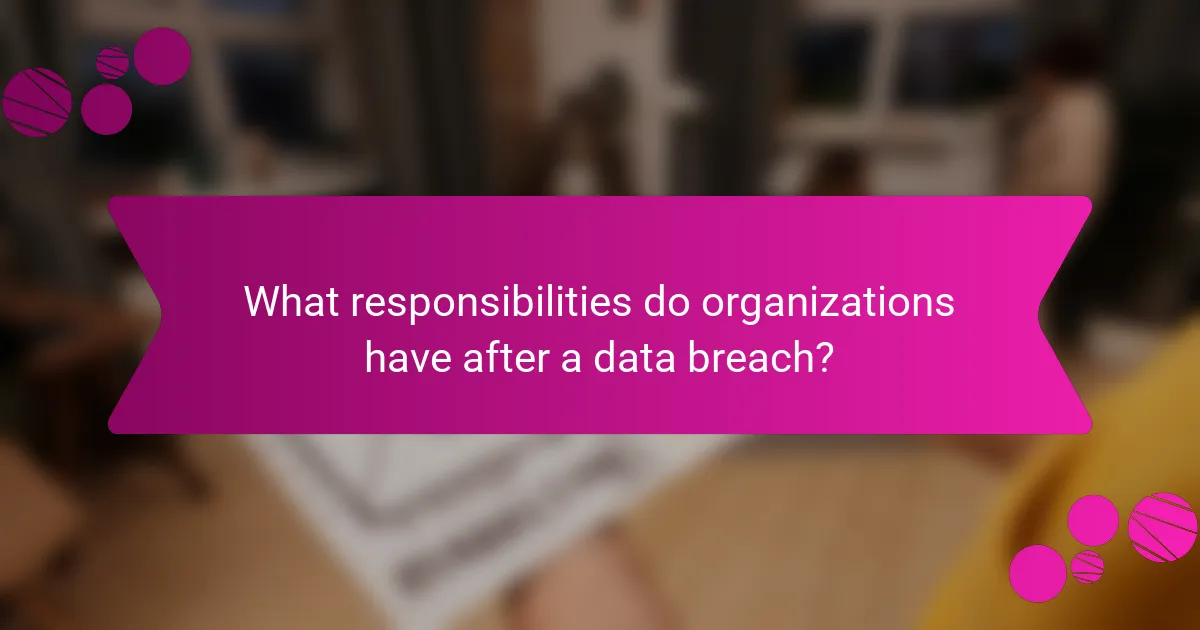
What responsibilities do organizations have after a data breach?
Organizations have several key responsibilities after a data breach, including compliance with data protection regulations, providing credit monitoring services, and ensuring transparency in communication with affected individuals. These actions are essential to mitigate the impact of the breach and maintain trust with customers and stakeholders.
Compliance with data protection regulations
Organizations must adhere to relevant data protection regulations following a data breach. This includes notifying regulatory bodies within specified timeframes, which can vary by jurisdiction, such as 72 hours under the GDPR in Europe. Failure to comply can result in significant fines and legal repercussions.
Additionally, organizations should conduct a thorough investigation to determine the breach’s cause and implement measures to prevent future incidents. This may involve updating security protocols, conducting employee training, and enhancing data encryption methods.
Providing credit monitoring services
Offering credit monitoring services is a crucial step organizations can take to support individuals affected by a data breach. These services help monitor credit reports for suspicious activity, providing peace of mind to those whose personal information may have been compromised.
Organizations should consider covering the cost of these services for a minimum of one year, as this is a common industry standard. Providing clear instructions on how to enroll in these services can further assist affected individuals in protecting their financial information.
Transparency in communication
Transparency is vital in maintaining trust after a data breach. Organizations should promptly inform affected individuals about the breach, detailing what information was compromised and the steps being taken to address the situation. This communication should be clear and accessible, avoiding technical jargon.
Regular updates should be provided as new information becomes available, including guidance on how individuals can protect themselves. Organizations should also establish a dedicated support line or email for inquiries related to the breach, ensuring that affected individuals have a direct channel for assistance.
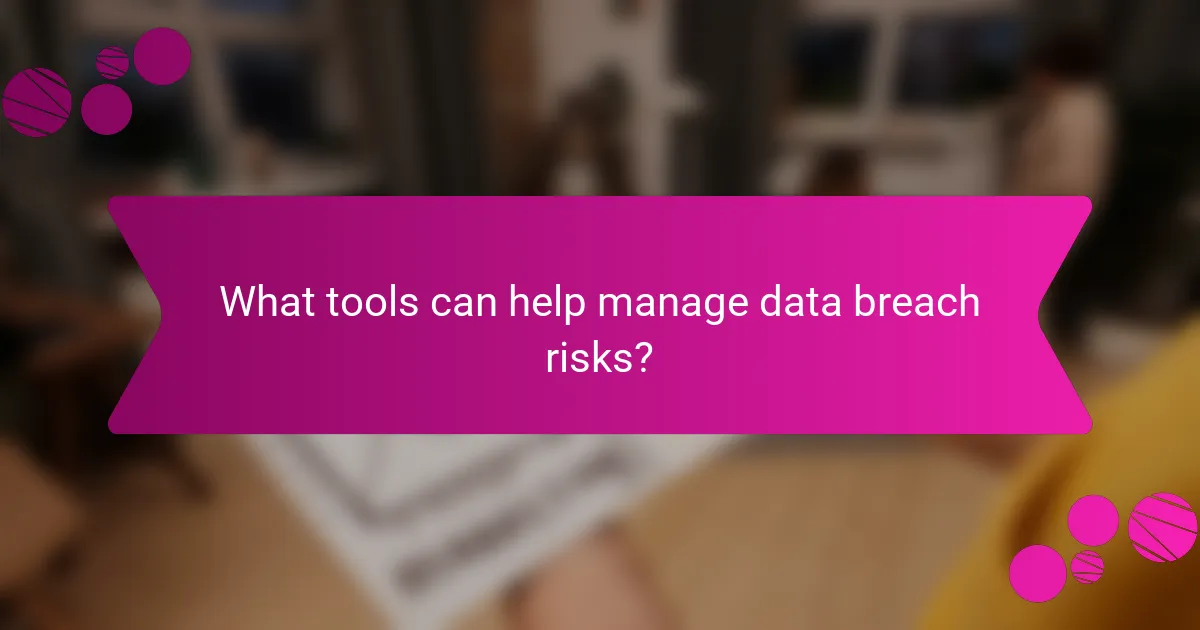
What tools can help manage data breach risks?
To effectively manage data breach risks, organizations can utilize a variety of specialized tools designed to prevent, detect, and respond to potential threats. These tools help in safeguarding sensitive information and ensuring compliance with relevant regulations.
Data loss prevention software
Data loss prevention (DLP) software is essential for monitoring and controlling data transfers to prevent unauthorized access or leaks. It works by identifying sensitive information and enforcing policies that restrict its movement across networks and devices.
When selecting DLP solutions, consider features like content discovery, encryption capabilities, and real-time monitoring. Implementing DLP can significantly reduce the risk of data breaches by ensuring that sensitive data remains within secure environments.
Security information and event management (SIEM) tools
SIEM tools aggregate and analyze security data from across an organization’s IT infrastructure, providing real-time insights into potential threats. They help in identifying unusual patterns or behaviors that may indicate a data breach.
Effective SIEM solutions should offer capabilities such as log management, incident response automation, and compliance reporting. Regularly updating and fine-tuning SIEM configurations is crucial to adapt to evolving threats and maintain optimal security posture.
Vulnerability assessment platforms
Vulnerability assessment platforms are designed to identify and evaluate security weaknesses within an organization’s systems and applications. These tools scan for known vulnerabilities and provide actionable insights to remediate them before they can be exploited by attackers.
When using vulnerability assessment tools, prioritize regular scans and timely updates to ensure comprehensive coverage. Incorporating these assessments into your security strategy can help mitigate risks and enhance overall data protection efforts.
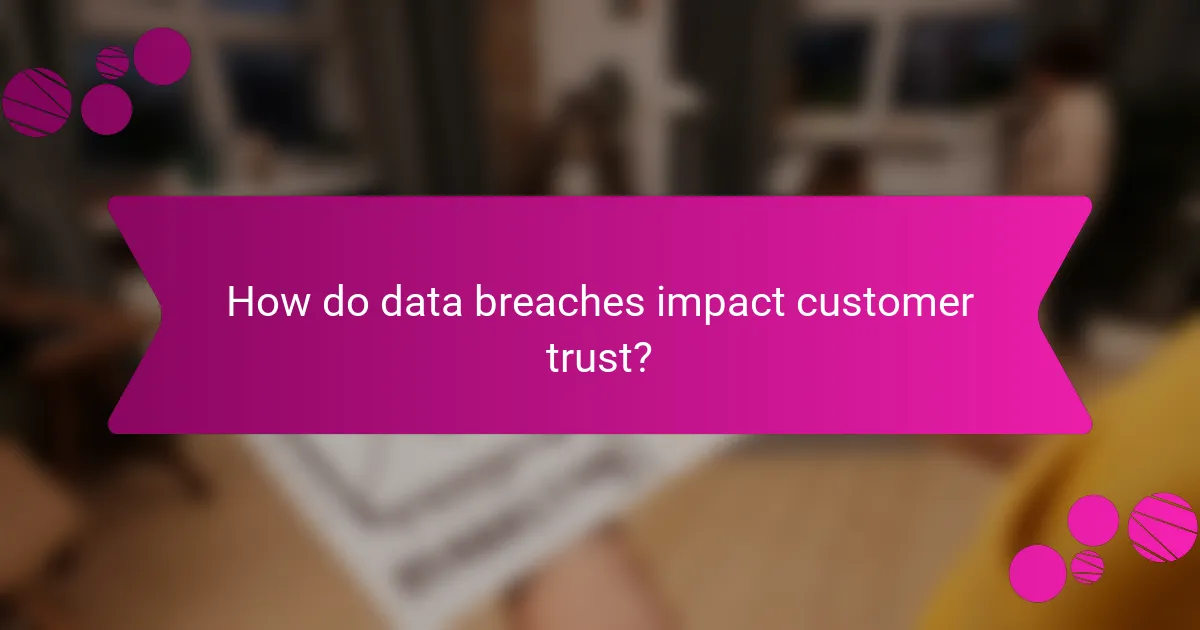
How do data breaches impact customer trust?
Data breaches significantly erode customer trust, leading to a loss of loyalty and potential revenue. When customers feel their personal information is compromised, they are less likely to engage with a brand or service in the future.
Loss of customer confidence
The immediate aftermath of a data breach often results in a sharp decline in customer confidence. Customers may feel vulnerable and question the security measures a company has in place to protect their sensitive information.
For example, a company that experiences a data breach may see a drop in sales or customer retention rates. Surveys indicate that a significant percentage of consumers are likely to stop using a service after a breach, with some estimates suggesting this could be as high as 60%.
To mitigate this loss of confidence, businesses should communicate transparently about the breach, outlining steps taken to address the issue and prevent future occurrences. Offering support, such as credit monitoring services, can also help rebuild trust.


